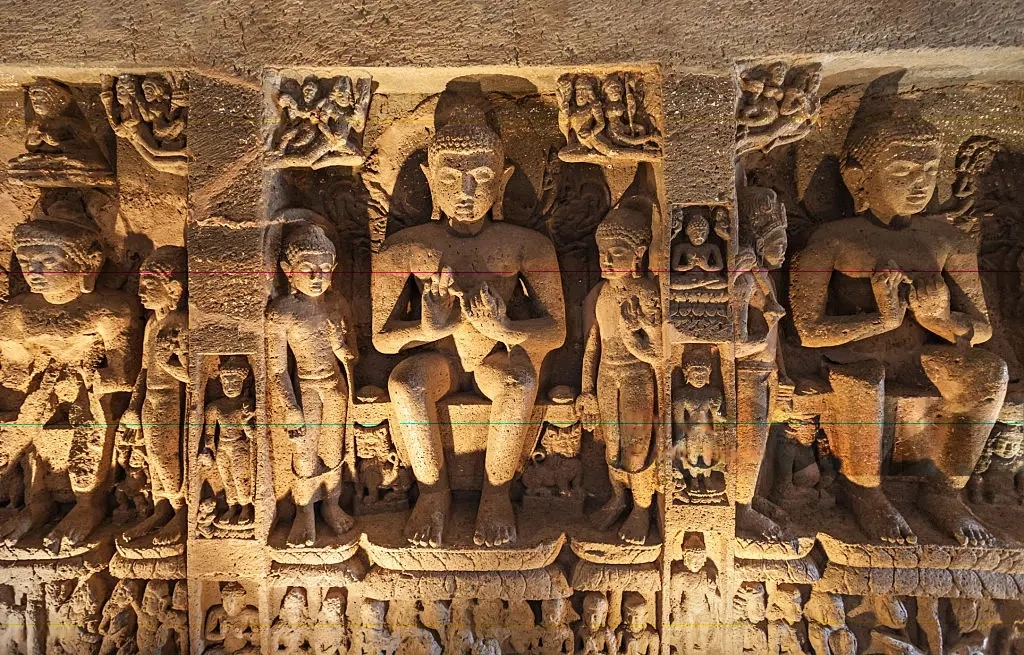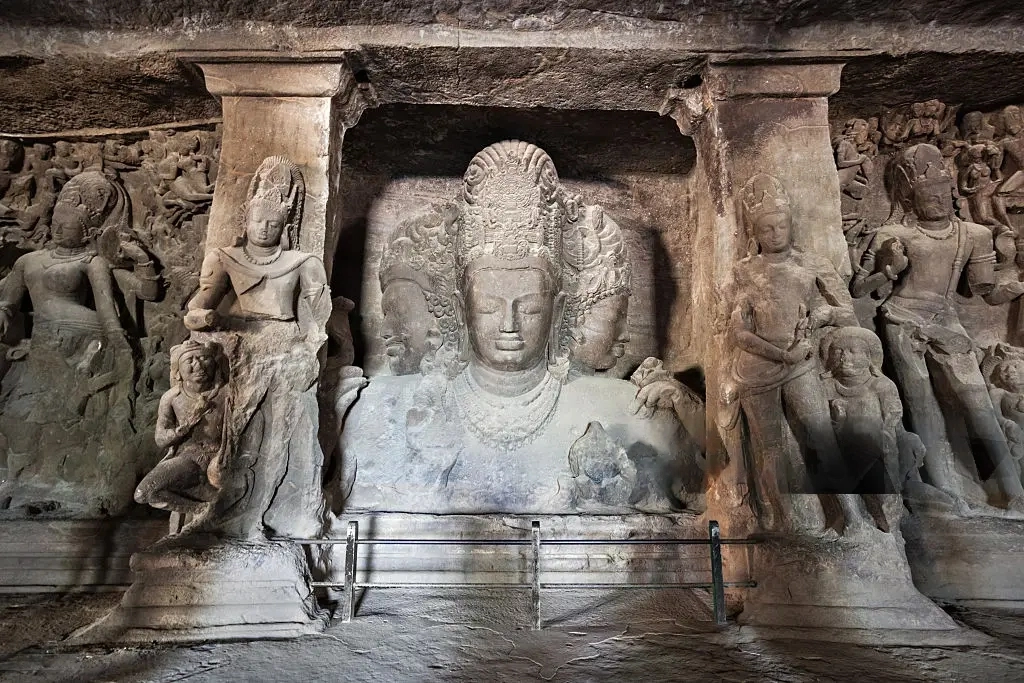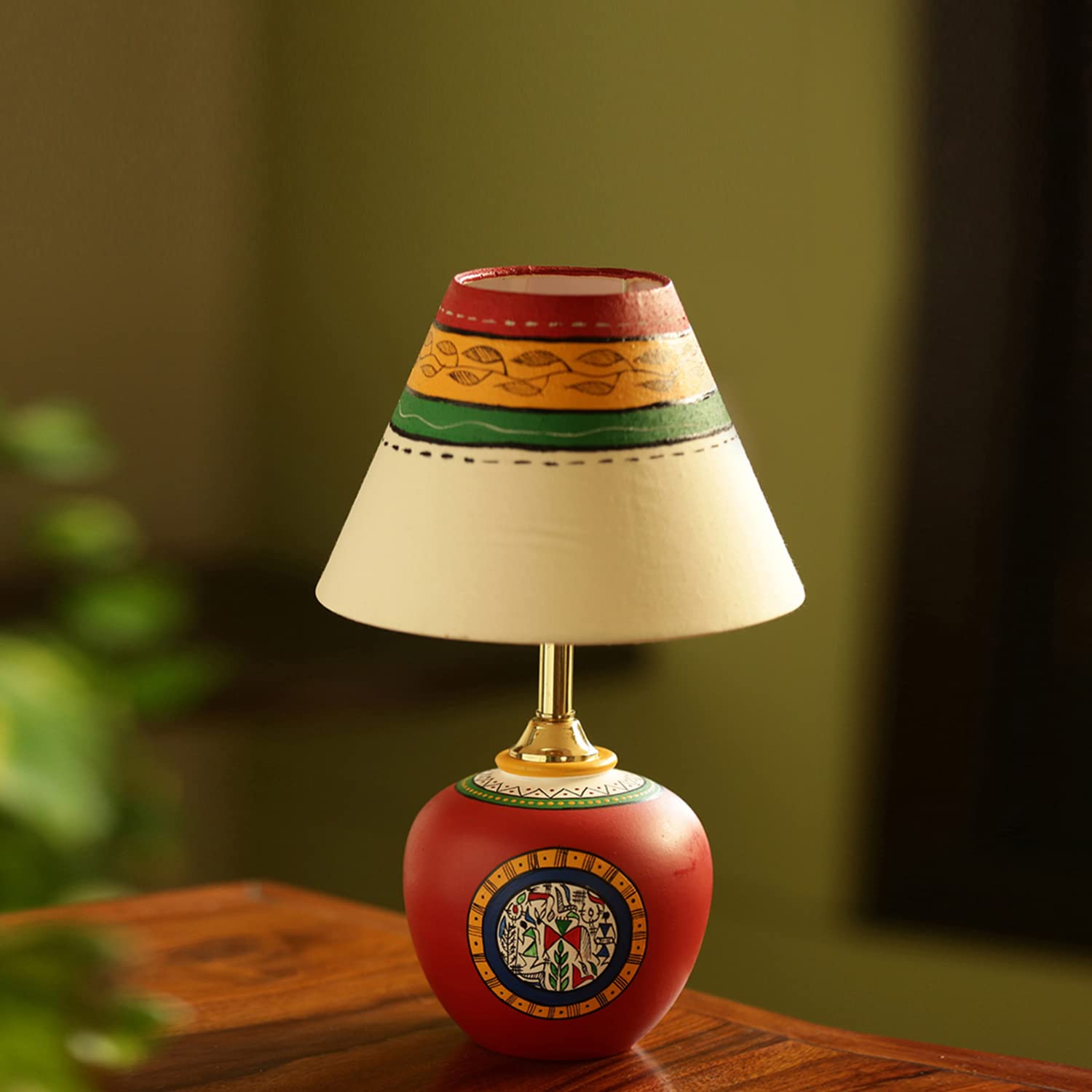Maharashtra, a state in western India, boasts a rich tapestry of cultural heritage. Among its many contributions to Indian culture, the art and sculpture of Maharashtra hold a special place. From ancient rock-cut caves to modern art movements, the state’s artistic legacy is both diverse and profound. Exploring the Rich Art and Sculpture of Maharashtra reveals a breathtaking journey through ancient caves, majestic temples, and vibrant folk traditions.
Maharashtra, a state known for its vibrant culture and historical significance, is a treasure trove of traditional art and craft. Rooted in the state’s history, folklore, and daily life, artistic expressions showcase the creativity and craftsmanship of its people. This blog delves into the various traditional art forms and crafts of Maharashtra, highlighting their unique features and cultural significance.
1. Ajanta and Ellora Caves
The Ajanta and Ellora Caves are perhaps the most famous examples of Maharashtra’s ancient art. These UNESCO World Heritage Sites are a testament to the artistic and architectural prowess of ancient India.
Ajanta Caves: Carved between the 2nd century BCE and 480 CE, the Ajanta Caves are renowned for their stunning murals and intricate carvings. The paintings, which depict scenes from the life of Buddha, are celebrated for their vibrant colors and delicate details. Buddhist monks used these caves as a retreat, and the caves are now considered masterpieces of Buddhist religious art.
Ellora Caves: Located near the city of Aurangabad, the Ellora Caves were constructed between the 6th and 10th centuries CE. Unlike Ajanta, Ellora is a multi-religious site, featuring Hindu, Buddhist, and Jain caves. The Kailasa temple, a monolithic structure dedicated to Lord Shiva, is the crown jewel of Ellora. It is an architectural marvel, carved from a single rock and showcasing intricate sculptures and towering pillars.

2. Elephanta Caves
Situated on Elephanta Island near Mumbai, the Elephanta Caves are another significant site. These caves, primarily dedicated to Lord Shiva, date back to the 5th to 8th centuries CE. The centerpiece of the Elephanta Caves is the colossal 20-foot-tall statue of Trimurti, depicting three aspects of Shiva: the creator, the preserver, and the destroyer. The artistry here reflects the height of rock-cut sculpture in India.

3. Modern Art Movements
Maharashtra has also been a hub for modern and contemporary art in India. Mumbai, the state’s capital, is home to several prominent art galleries and museums, such as the Jehangir Art Gallery and the National Gallery of Modern Art.
Progressive Artists’ Group: Formed in 1947 by six artists, including F.N. Souza and S.H. Raza, the Progressive Artists’ Group played a pivotal role in shaping modern Indian art. They sought to break away from traditional styles and embrace contemporary techniques, blending Indian themes with Western styles. This movement laid the foundation for the thriving modern art scene in Maharashtra.
Public Art and Installations: Mumbai’s urban landscape is dotted with public art installations and sculptures. The Kala Ghoda Arts Festival, an annual event, transforms the city into an open-air gallery, featuring works from local and international artists. These installations add a dynamic and accessible element to the city’s art scene.
4. Traditional Art Forms
1. Warli Art
Warli Art is one of the most distinctive traditional art forms of Maharashtra. The Warli cohort, residing in the northern regions of the state, created this art form characterized by its simplistic yet powerful visual language.
- Medium and Technique: Warli artists create their paintings using a mixture of rice paste and water on a red ochre or mud base. The artists use simple geometric shapes like circles, triangles, and squares to depict scenes of daily life, rituals, and nature.
- Themes: Common themes include farming, hunting, dancing, and celebrations. The paintings also feature animals, birds, trees, and festivals, reflecting the cohort‘s close connection with nature and their community life.

2. Paithani Weaving
Paithani Sarees are renowned for their intricate designs and rich colors, representing the pinnacle of Maharashtra’s textile art.
- Origin: This craft originated in Paithan, a town in the Aurangabad district. These sarees are traditionally handwoven from silk and adorned with gold and silver threads.
- Designs and Motifs: Paithani sarees feature motifs inspired by nature, such as peacocks, parrots, lotuses, and vines. The pallus (the decorative end of the saree) often displays intricate designs like the asavali (flowering vine) and the akruti (geometric patterns).
- Cultural Significance: Wearing a Paithani saree is a symbol of elegance and tradition in Maharashtra, often passed down through generations as heirlooms.

3. Kolhapuri Chappals
Kolhapuri Chappals are traditional handcrafted leather sandals that originated in the town of Kolhapur.
- Craftsmanship: Kolhapuri chappals boast durability and intricate designs, making them a popular choice. Artisans use vegetable-tanned leather and embellish the sandals with elaborate patterns and braids.
- Variety: They come in various styles, from simple designs to more ornate versions adorned with colorful threads and beads.
- Usage: Kolhapuri chappals are not only a staple of traditional attire but have also gained popularity in modern fashion for their comfort and style.

4. Bidriware
Bidriware is a metal handicraft that has its roots in Bidar, Karnataka but is also popular in Maharashtra.
Material and Technique: This craft involves engraving intricate designs on a blackened alloy of zinc and copper, inlaid with silver or gold. Craftspeople achieve the unique black color of Bidriware by treating the alloy with a special soil from Bidar.
- Designs: Common designs include floral patterns, geometric shapes, and arabesques. The finished products range from vases, plates, and boxes to jewelry and decorative items.
- Cultural Importance: People often use Bidriware in religious and ceremonial contexts, valuing it for its aesthetic appeal and craftsmanship.

5. Narayan Peth Sarees
Narayan Peth Sarees is another exquisite example of Maharashtra’s weaving tradition, originating from the town of Narayan Peth in Solapur.
- Fabric and Weaving: People weave these sarees from silk and cotton, featuring contrasting borders and pallus. The hallmark of these sarees is their oblique square designs and temple motifs.
- Colors: Narayan Peth sarees come in vibrant colors like red, purple, and green, often incorporating gold or silver threads.
- Usage: Women in Maharashtra wear Narayan Peth sarees during festivals and auspicious occasions, symbolizing the state’s rich cultural heritage.
6. Dhimsa and Lavani Folk Dance Costumes
Dhimsa and Lavani are traditional folk dances of Maharashtra, each with its own unique costumes and accessories that highlight the state’s rich textile art.
- Dhimsa: Originating from the tribal communities in the eastern regions of Maharashtra, Dhimsa dancers wear colorful, flowing garments adorned with traditional jewelry and accessories. The attire is designed to allow freedom of movement and to enhance the rhythmic dance steps.
- Lavani: Lavani dancers wear nine-yard sarees, draped in a distinctive style that facilitates dynamic dance movements. People often embellish the sarees with intricate embroidery and they are often brightly colored. The dancers also wear traditional jewelry, including nose rings, bangles, and anklets, adding to the visual appeal of the performance.
Conclusion
The art and sculpture of Maharashtra are a vibrant reflection of its rich history and diverse culture. From the ancient caves of Ajanta, Ellora, and Elephanta to the modern art movements and traditional crafts, Maharashtra’s artistic legacy continues to inspire and captivate. Exploring this artistic heritage offers a glimpse into the state’s soul, revealing the timeless beauty and creativity that define Maharashtra.
The traditional art and craft of Maharashtra are a vibrant testament to the state’s rich cultural heritage and artistic ingenuity. From the captivating simplicity of Warli art to the opulent beauty of Paithani sarees and the intricate craftsmanship of Bidriware, each art form tells a story of the region’s history, traditions, and way of life. Exploring these art forms offers a glimpse into the heart of Maharashtra, where creativity and tradition continue to thrive.
TO LEARN MORE ABOUT MAHARASHTRA CLICK BELOW
- Government Policies and Interventions in Maharashtra
- E-Governance and Its Applications in Maharashtra
- Urbanization and Demographic Trends in Maharashtra
- Agriculture in Maharashtra: Issues and Schemes
- Minerals of Maharashtra
- Districts and Divisions of Maharashtra
- GI Tag Products of Maharashtra
- Celebrating Maharashtra Day
- Exploring Maharashtra’s Monsoon Magic: 7 Must-Visit Destinations
- Cultural Heritage of Maharashtra
- Exploring Maharashtra’s Rich Heritage

ExclusiveLane ‘Warli Handpainted Matki’ Home Decorative Terracotta Bedside LED Table Lamp
Art Type:- Warli Art is done on a terracotta Base. Shade is handpainted with multiple Colors
Material:- Base: Terracotta, Shade: Made Of Cotton Cloth Wrapped Over Polyvinyl
Dimensions:- Total (H) = 12.9, Shade: (H*DIA) = (4.8 x 8.1), Base: (H*DIA) = (8.9 x 5.3) Inch
Package Content:- 1 Base, 1 Shade






Thanks for sharing. I read many of your blog posts, cool, your blog is very good.
Thank you for your sharing. I am worried that I lack creative ideas. It is your article that makes me full of hope. Thank you. But, I have a question, can you help me?